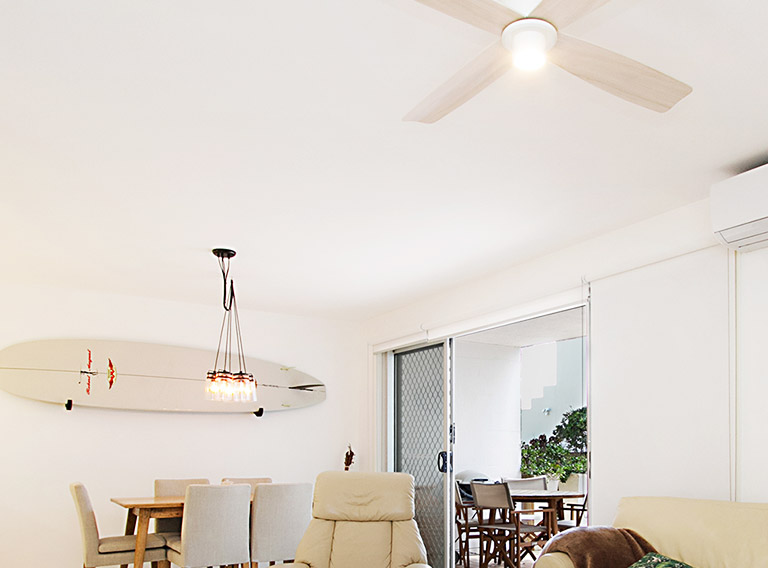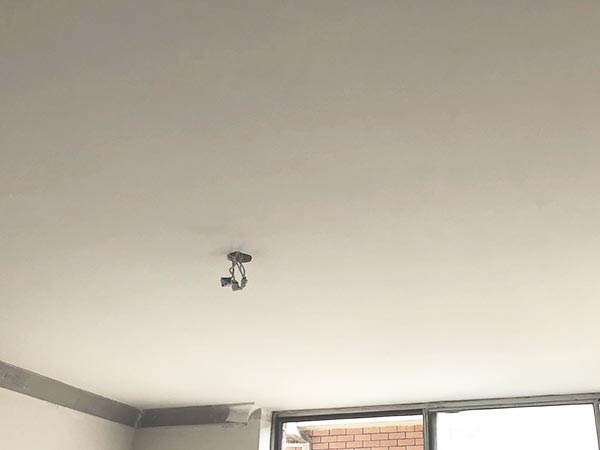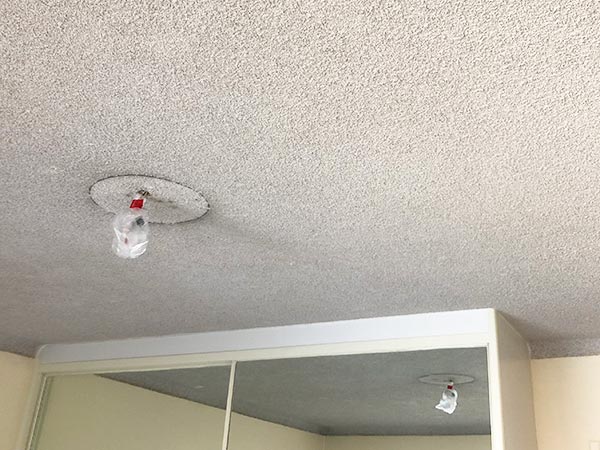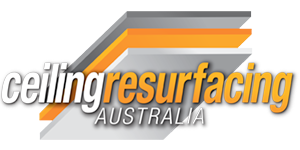





Frequently Asked Questions
Below you’ll find answers to the questions we get asked the most. If you can’t find answers to your questions here, please contact us – we’re happy to assist you with your enquiries.
Our FAQs are split up into the following categories:
- Commonly asked general questions
- Alternative solutions and their pros and cons
- Permissions and legalities
- Features and add ons we can and can’t do
- The process and how we work
- Things to check before we commence work
General questions
No. Your ceiling will be perfectly smooth with no texture variation. It will look similar to a standard plasterboard (Gyprock) ceiling but only better. (No ugly joints at night time when you turn the lights on) . All those bumps will be hidden forever!
No! Builders often advise clients against rendering or skiming over textured ceilings as they can delaminate over time resulting in costly repairs. VermicuHIDE ® is NOT the same as rendering or skimming over textured ceilings. It has been carefully designed and tested to be a permanent solution, which is why we give a lifetime warranty! When you are getting quotes, whatever solution you are considering, ask what warranty they are willing to provide, and if they will match our lifetime warranty. (Get it in writing)
Ceiling Resurfacing Australia are Australia's texture removal specialists! No one else can offer a solution that makes your home feel bigger while giving you the confidence of Australia's only lifetime warranty for vermiculite ceiling removal. Ceiling Resurfacing Australia offers the best finish of any possible solution and eliminates many of the problems that other solutions often encounter. Don't risk it! Do it properly the first time!
It doesn't compare - it is much better! We have clients who have removed walls at a later time after having their ceilings resurfaced. They have called up back to continue our process over the existing Gyprock ceilings as they don't compare to the resurfaced finish. A resurfaced ceiling is smoother than a Gyprock ceiling, as it has no variations because of plastered joints and screw holes. Our resurfaced ceilings are an industry high Level 5 finish (AS/NZS 2589). A plasterboard ceiling in Australia is typically only finished to a Level 4 finish. You would likely need to spend thousands of dollars more to achieve a level 5 finish over a plasterboard ceiling.
Yes. We can resurface most textured surfaces. Our trademarked VermicuHIDE ® system takes advantage of the texture to hide imperfections on the surface below.
Generally the cost is similar to a false ceiling installation. Costs for false ceilings can vary significantly depending on the experience of the contractor and the quality of their workmanship, but generally you get what you pay for. The finish achieved with a resurfaced ceiling is an industry high Level 5 finish (AS/NZS 2589), which is the highest quality attainable according to AS/NZS standards. A floating ceiling will only achieve a Level 4 surface unless you are prepared to spend thousands of dollars extra.
No. VermicuHIDE ® is a proprietary trademarked system exclusive to Ceiling Resurfacing Australia. It was designed specifically to address shortfalls in traditional options available in dealing with textured ceilings. We guarantee you can't get a better quality ceiling surface, and offer the industry's only Lifetime warranty transforming vermiculite ceilings into a smooth surface.
No. Because we only remove the "poky" part of the texture, the body of the texture remains in tact on the ceiling. It is the body of the texture that provides the sound dulling effects of vermiculite. The VermicuHIDE ® process encapsulates the body of the texture and therefore sound must still travel through the vermiculite resulting in the same sound insulating benefits .
No. Unfortunately, we are in the business of making texture disappear – not reappear! You’re best to try to find an “old school” painter/plasterer to attempt any repairs. Generally it is almost impossible to match texture and old texture colours. Once a textured ceiling has been resurfaced though, it is simple and cheap to repair any damage that may have occurred - and you can use any plasterer/painter to do it.
After decades in the industry, we saw the need to develop better options for people wanting to modernise their textured ceilings. Because of the drawbacks in existing options, we spent years developing and perfecting the VermicuHIDE ® resurfacing system. Our system is unique - It is not simply skimming the ceiling. We have developed a premium, durable system to upgrade your old textured ceilings!
Some companies offer "budget" popcorn ceiling removal and guarantee to beat their competitors pricing. Often they are "jack of all trades" handymen with client reviews for numerous types of jobs. Look closely to see if they use generic photos found online, or real photos of their own work. Often you'll see they claim to treat all ceilings as if they contain asbestos, but photos showing contractors without proper PPE and adequate asbestos containment are displayed. Vermiculite can contain friable asbestos which requires specialised processes to remove. It cannot just be swept up afterwards as many "jack of all trades" claim. If in doubt, speak to a government accredited NATA lab for independent advice. We recommend you check license details for anyone claiming to "remove" vermiculite. They must be licensed as Friable Asbestos Removalists, not just have done a bonded asbestos course. Be sure to check the fine print for an actual license, not just completion of a basic TAFE style course.
Of course ultimately once removed you have the more expensive task of achieving an acceptable finish which is not provided by people claiming to remove it.
In short...BE VERY CAREFUL! Do it right. Do it once.
Alternative solutions
There are numerous reasons why you don't want to do this. The endless videos online (invariably from North America) make it look so easy, but unfortunately the way it has been applied in Australia is very different and makes it extremely difficult to remove. (If you don't believe us, just try it... but maybe read the other reasons not to do it first)
- Vermiculite is often there as a part of the building’s fire protection system and removing it can get you into a lot of trouble!
- Vermiculite helps to reduce sound transferring through the building - therefore most stratas won't let you remove it.
- By and large the most common reason texture has been applied is it was a cheap way to hide a multitude of imperfections and height variations on the substrate. Removing it just creates a bigger (and more expensive) job to get your ceilings looking smooth and flat. (Most people who offer to remove it don't include restoring a smooth finish - they just remove it)
- Vermiculite can contain friable asbestos and this must be removed by a specialist; a licensed removalist. However, BEWARE OF COMPANIES THAT CLAIM TO BE LICENSED. Some falsely claim to be licensed after doing a TAFE style course putting everyone in danger. Make sure you check their license with your state regulators.
No. Simply rendering or skimming over texture is a crude way of dealing with it and comes with significant risk over time. In contrast, the VermicuHIDE® resurfacing system has been designed specifically for textured surfaces. It is a true resurfacing process that doesn't just load a large quantity of product over the top. The VermicuHIDE® process "cuts" your ceiling flat while cleaning the years of dust off and thinly applying lightweight compounds under high pressure. The end result is the highest quality ceiling surface that can be achieved. In many cases it comes with our industry leading lifetime guarantee.
In some instances installing a Gyprock ceiling may makes sense, but generally that is not the case. If you have exposed pipes in a bathroom or laundry, it can be a good way of hiding the ugly plumbing. However, installing a plasterboard or Gyprock ceiling will cause you to loose 5-10 cm (minimum) of height which will make your home feel significantly smaller - you will notice it! (It may also make your ceilings non-compliant, causing major headaches when it comes time to sell)
Alternatively a ceiling resurfaced with VermicuHIDE® will make your ceilings feel higher, and therefore making your home feel bigger - you will notice it! In addition, it is not uncommon for residents to complain about floating ceilings that "rattle" from vibrations caused by active neighbours in the unit above (floating ceilings use a track and clip system that the plasterboard is attached to).
You will need to lose 8-10 cm in ceiling height if you want to install downlights as regulations require sufficient headroom for heat dispersion. Your home will feel drastically smaller. Note too that smaller homes with downlights rarely demand higher resale prices than roomier properties without downlights. Modernising your home and giving it a spacious feel - through resurfacing and installation of modern and economic LED lighting - will greatly improve the resale prospects and value of your property.
If you are happy with the same old popcorn ceiling, but a different colour, then this is a good option. Probably more than half our our customers have already had their ceilings painted, but they are still living with a 1970's style ceiling, but just with fresh paint!
When compared to resurfaced ceilings, painting vermiculite ceilings can be very costly and time consuming. The vermiculite texture on the ceiling acts like a dry sponge, and soaks countless litres of paint in before it starts to look white. Some painters recommend up to 50 litres of paint per bedroom, whilst many painters simply refuse to paint vermiculite as it is very difficult to get a consistent, non-patchy finish.
In order to achieve any sound reduction with a plasterboard ceiling, an engineered sound rated ceiling system needs to be installed. Simply putting in a false ceiling and some insulation will have little, if any perceivable benefit in reducing the types of sound that transfers through concrete structures. Sound rated ceilings are prohibitively expensive and result in additional ceiling height loss.
Additionally, rather than reducing sound, often floating ceilings can accentuate noises through vibrating clips if you have active neighbours above you.
Permission & Legalities
Of course! That being said - our product is so good that we have never had a warranty claim!
Our lifetime limited warranty covers most substrates. However, unlike rendering and other techniques, the VermicuHIDE® process mechanically applies our products at very high pressure, removing any dust that could cause disengagement. This results in a permanent and strong adhesion. Once completed, the result is an industry high Level 5 finish – the highest quality finish for a plastered ceiling.
In most cases, no. Structural alterations or attachments (such as a Gyprock false ceiling) DO require body corporate approval, but the VermicuHIDE® system is non-structural. Our trademarked VermicuHIDE® resurfacing system is prepares your existing ceiling for painting (patching and sanding...just in a high-tech way). No new structure is added and the vermiculite still remains on the ceiling – trimmed and hidden through our advanced resurfacing system.
We do recommend notifying strata of your intentions and refer them to our website. In almost all cases that will be sufficient. In the rare instance that you are lucky enough to have a strata that requires permission to change a light bulb, we are happy to liaise with them on your behalf. Our experienced technical assistance team will supply any additional information that may be required.
Most sound transfer in concrete buildings travels through the structure itself, requiring a full sound-rated ceiling system to make any noticeable effect. This would be very expensive and reduce the ceiling height even further. Although vermiculite ceilings do help to slightly dull sound transfer, generally they don't meet any particular "sound rating" as per building codes. Due to the unique process we use, a resurfaced ceiling won’t diminish any sound dulling properties inherent to vermiculite ceilings.
Yes! All of our teams have qualified and licensed tradesmen with decades of experience in the industry. We pride ourselves on providing an exceptional finish.
In Australia, areas of a home that are deemed to be "habitable" (ie. main living areas, bedrooms, etc) must be a minimum of 2.4m (2400mm) high from the surface of your floor covering. Thus 2.395m (for example) is non-compliant. Non-compliance can impact your ability to sell you home. As a rule of thumb, in order to install a false/floating Gyprock ceiling will require at least 2.45m (2450mm) of ceiling height prior to installation or a minimum of 2.5m (2500mm) if you want to install downlights.
If downlights are a determining factor, remember: Cheap homes regularly have downlights but rarely do expensive homes have low ceilings.
Can I?
Yes. In fact around half of the ceilings we resurface have already been painted.
Yes. Speak to your electrician about “chasing” the wire into the concrete. Once this has happened, we can hide the wire when resurfacing.
Yes. If you are on the top floor, this is the same process as moving or adding lights in any normal house. If you live on a lower level and have concrete ceilings, an electrician can "chase" the cables into the concrete allowing you to move or add as many extra lights as you like. We simply fill the chased cable runs as a part of our preparation. You cannot see any signs of this once the ceiling has been resurfaced.
Yes. We prepare this area first and blend it together as we resurface. If you are on the top floor, we will need to make sure the fire rating is reinstated if required.
If your unit is on the top floor and you have a plaster ceiling downlights can be installed, but you must seek appropriate advice about downlights that won’t compromise your ceiling’s fire rating. Your strata manager may be of assistance with this. If your ceiling structure is concrete, installing downlights is not an option. Before you rush out to install a false ceiling, keep in mind a couple of things. In order to legally install downlights, you will loose 8-10 cm of ceiling height. Even if you can legally afford to lose this height, it will make your unit feel smaller. Expensive homes almost always have higher ceilings as they make the space feel bigger. Low ceilings make a space feel smaller. Downlights generally flood a space with light rather than allowing for any atmosphere or ambience. You can nearly tell the age of a home by the type of downlights. With advancements in LED technology, there are many better lighting options available.
The ceiling resurfacing process
Most units we resurface take 2-3 days (Including the installation of new cornices). Obviously, at times there are other factors that may affect how long it takes, but unless you have a larger property, rarely do we need much longer than this.
As a general renovation rule, it is good to start at the top and work down. You will find it much easier to avoid damage to walls, floors, kitchens, etc. if you follow this rule. Although we can and regularly do resurface ceilings that have finished walls and floors, if you are planning a renovation, it is always easier to get your ceilings done right at the start.
Not particularly. We use vacuums and spray equipment. The noise that we make would, at worst, be comparable to using some of your kitchen appliances. The noisiest part of our work usually takes place in the middle of the day. We don’t normally have any complaints with regards to noise.
As with any construction work, dust is created. We do our best to reduce dust by using dust extraction equipment and constantly cleaning as we work but, unfortunately, dust free construction hasn't been invented yet! In saying that, it doesn't matter if there's a little bit of dust or a lot of dust, it all needs to be cleaned up - and that is what we do!
Yes. The painting process is the same as any new plasterboard (Gyprock) ceiling and can start as soon as the resurfacing process is finished. No special preparation is needed, just an undercoat and paint. Painting costs can be reduced by more than 60% once a raw vermiculite ceiling has been resurfaced. Painters love it!
Painting can start as soon as we have finished. There is no cure or drying time required between resurfacing and painting.
Yes. Installing cornices is generally included our quotations if applicable. As the vermiculite texture often curves down onto the walls, it needs to be hidden. In some instances removing the texture could compromise the fire system of the building, so we simply hide it with plasterboard cornices giving you a modern fresh look. If you would like a more modern profile we are happy to provide options where appropriate.
The checklist
We need to work several times over every section of your ceiling. As such, furniture can make the process a little trickier. We can resurface with limited furniture (a couch, fridge, bookshelf etc.) but we can't work with too much clutter. We often resurface properties that are occupied, but it is easier for all involved if works can be completed in an empty property. We will work with you to acheive a safe and practical working environment.
In order to resurface under your lights and fans you will need a licensed electrician to remove these prior to us starting. It would rarely take an electrician more than an hour to do this. Once the ceiling is finished and painted, they can be put back up, although most of our clients choose to update their light fittings to something more modern at this time. We still require power (and water) to complete our work, so the electrician can simply put caps over the wires until the ceiling has been painted and you are ready to install your new lights.
Occupational Health and Safety responsibilities require that the premises be vacated during the resurfacing process. Usually this means making alternate arrangements for a couple of nights if you are currently living in the premises. Sometimes our clients schedule their resurfacing to be done in conjuction with a vacation away or just have a couple of nights staying with family.
Yes. After resurfacing your ceiling, we spend considerable time cleaning leaving your home so there's no shocks! You will need to simply give it a "once over" before enjoying you amazing new smooth ceilings!
No. All waste removal is included in the price quoted.
Still haven’t found answers to your questions? Feel free to contact us to get all your questions answered!
VermicuHIDE® - the premium choice!

Results that speak for themselves





